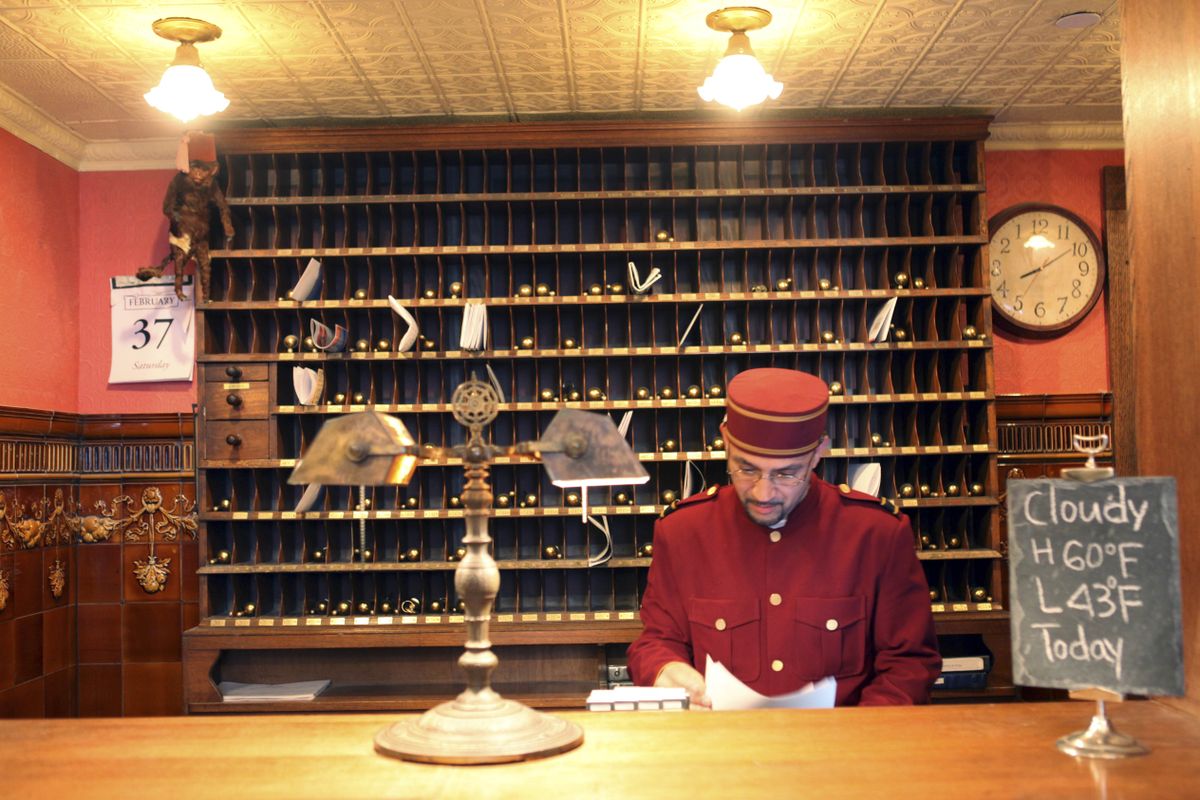Microhotel the next big thing?
Tiny rooms offer sleeping space but little else

NEW YORK – A New York hotel with luxury sheets and state-of-the-art audio for less than $100 a night? All you have to sacrifice is a bit of privacy and a little – well, a lot – of space.
Moving beyond budget accommodations to an idea that borrows from a ship’s berth or a train’s sleeper car, developers are gambling that in tough times travelers looking for a little pampering at lower prices will embrace microhotels.
The concept of an entire hotel room the size of a suburban bathroom has spread across Europe in recent years. And as the U.S. economy deteriorates, interest in the idea has grown, especially in high-priced markets like New York City – where there are fewer options for budget travelers.
“It’s certainly the right product for the times,” said Tom Botts, a specialist in the hotel and travel industry at Hudson Crossing, a strategic advisory firm.
The trick, says Sean MacPherson, co-developer of The Jane hotel, is to make its 150 tiny single rooms – about 7 feet wide by 8 feet long – feel “charming and special” rather than simply cramped.
With no room for extra furniture, guests at The Jane – which is opening in stages between now and the end of the summer – stash suitcases and clothing in storage spaces above and below the narrow bed. A large mirror and a small window help stave off potential claustrophobia.
The “microluxury” touches at what was originally, in 1908, a hotel that rented cabin-like rooms to sailors for just 25 cents a night include 350-thread count sheets, a 23-inch flat-screen LCD television, DVD player, iPod dock and free wireless Internet.
“If you stay at a hotel at any price, you have to have a sense of hospitality and luxury,” MacPherson said. That’s especially true in this economy, he added, when people are looking to get the most bang for their buck.
So, the bathroom? Alas, you’ll likely have to share two public bathrooms on each floor, which each contain a pair of tiled shower stalls and toilets. The hotel also has 150 larger – and higher-priced – “captain’s cabins” that include private bathrooms and offer a view of the Hudson River.
U.S. interest in the microhotel model has intensified as the economy weakens, said Bjorn Hanson, a hotel expert with New York University’s Tisch Center for Hospitality, Tourism and Sports Management.
Choice Hotels International Inc., a franchiser of lower-priced chains like Econo Lodge and Sleep Inn, has researched the microhotel model and visited some of them. The company has no plans to move into the market right now, said spokeswoman Heather Soule, but is not ruling it out.
And hotel developer Richard Born, who is involved with The Jane and a similar hotel in midtown Manhattan called The Pod, said he and his partner have been approached by more than one national hotel chain looking to expand the microhotel concept in the United States.
European microhotels owned by the easyHotel chain saw a steady rise in demand last year that accelerated in the second half as the economy deteriorated, said commercial director Calum Russell. Occupancy at easyHotel’s London properties surged to 81 percent in January, from 65 percent in the same month a year earlier.
Russell said the company has also noticed more business travelers at its hotels as companies scale back on their corporate travel spending.
In the midtown neighborhood near the United Nations, The Pod’s occupancy levels are hovering near 90 percent as some other once-bustling NYC hotels sit half-empty.
The hotel, which opened in January 2007, has lowered its rates. A bunk-bed room with no bathroom, which peaked at $190 at the height of the market, are now going for $89 a night.
The 350-room hotel’s design is more bare-bones than The Jane’s, and the bed linens are less luxurious. But it, too, offers amenities like flat-screen TVs.